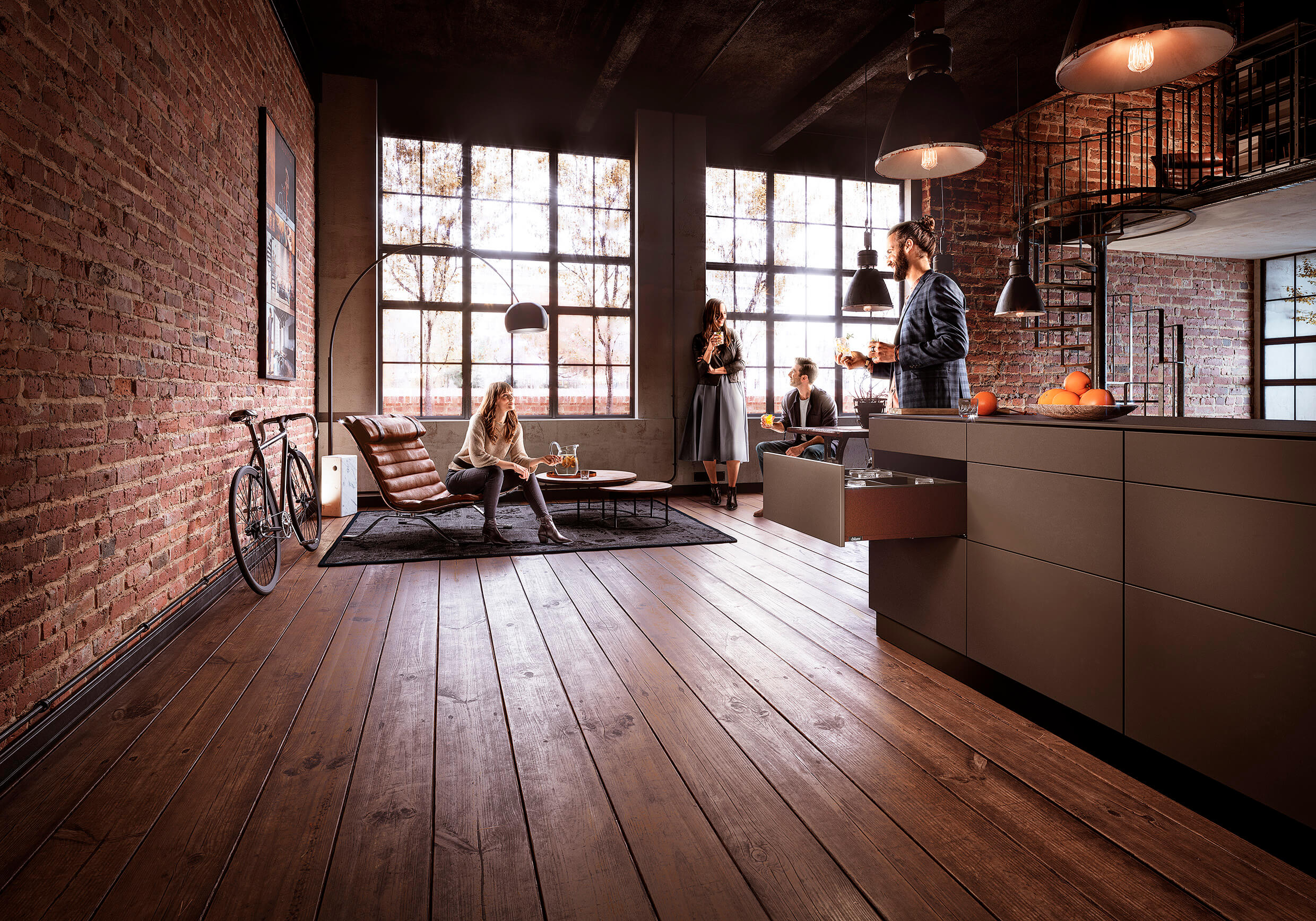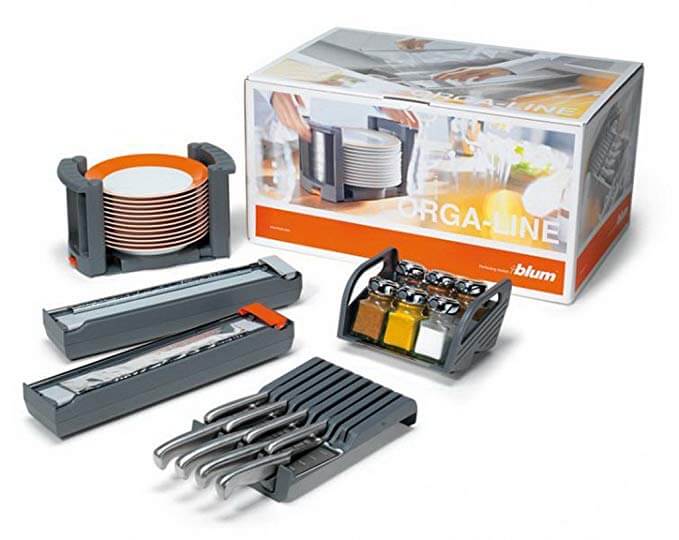A new kitchen by Inglis Hall for a Georgian Manor House
By Linda Parker
 Jay Powell, Design Project Manager at Inglis Hall, tells us about this contemporary kitchen that was designed and installed in Renton Hall, a spectacular Georgian manor house that had fallen into disrepair and needed bringing back to life.
Jay Powell, Design Project Manager at Inglis Hall, tells us about this contemporary kitchen that was designed and installed in Renton Hall, a spectacular Georgian manor house that had fallen into disrepair and needed bringing back to life.
Inglis Hall, founded by Toby Hall, has a workshop and studio in Lewes, where the team is committed to designing and crafting timeless, beautiful kitchens. This is achieved using locally sourced materials, traditional skills and sophisticated technology.

Any kitchen for such an individual project needed to bridge the gap between old and new, between rustic, and sleek, natural and sophisticated. Our client was keen to have modern appliances and features whilst maintaining a link to traditional craft and materials. This theme was used throughout the property, from an architectural perspective, and using the client’s wonderful collection of art, sculpture and woven baskets. Wall space was also a key consideration when designing this space, so tall cabinetry has been kept to a minimum to let the room breathe and to provide display space for a collection of vintage posters and large paintings.

Q: How did you set about answering that brief? Were you given a strict budget?
It always starts with exploring the floor plan of the space to discover the opportunities it provides with regards to positioning cabinetry and the different storage and working zones required. At Inglis Hall we always use a collaborative approach and ensure that any initial ideas are chewed over with others in our studio and most importantly, with the client. The best layout for fulfilling the client’s needs will often clearly present itself throughout this process and then the attention can then be diverted to the specifics of materials, textures, and finishes.
We were not restricted by budget, however establishing an accurate price point at the beginning of a design process is always our preferred approach. On large renovation projects such as these costs can easily spiral so we will always try our best to present a fully costed scheme so that intelligent decisions can be made where to spend the available funds.

Q: What were your choices of materials for cabinetry and surfaces?
Sawn oak cladding, Black Diamond Richlite (a paper/resin panelling material used for cabinetry) and Caesarstone’s Airy Concrete were combined under the tall Georgian ceilings to create the perfect mix of tone and texture, bringing the outside in and providing warmth within clean and refined lines. At Inglis Hall, we particularly like the texture and movement of the Caesarstone concrete finishes. Paired with the practicality of quartz they provide a work surface with a natural feeling that doesn’t compromise on function. We chose Airy Concrete from Caesarstone, which everyone thought was perfect! It offers a good contrast with the black Richlite cabinetry, without being too harsh, and is textured enough to work with our sawn oak cladding. The paint colour, Aged Copper by Fenwick & Tilbrook, was masterfully chosen by our client. It works beautifully within the space as a contrast to the subtle tones of timber, Richlite and brass.

Q: What was the extent of the renovation work involved with this project?
The project involved an exciting whole house renovation, and it included a stunning contemporary timber-framed pavilion extension. The biggest challenges were surrounding logistics. Concentration, communication, and stringent project management were vital when popping to site is a 1000-mile round trip! Survey visits had to be extremely detailed to be sure our cabinetry would fit and work around the architecture. Conversations with the site team had to be unambiguous and productive and clarity of design intent had to be prioritised to ensure everyone was on the same page.
The kitchen is the only internal route from the original house to the extension. As such it needed to allow for the effortless flow of people whilst meeting the needs of a busy family of keen cooks. With formal dining taken care of in the glass walkway to the extended living space, there was no requirement for a large table, however it seemed a shame not to allow for a small round breakfast table under the morning light and an open-ended island that invites a more social kitchen experience.

Q: What design elements do you think make the scheme so successful?
I particularly like using our band-sawn oak as an architectural tool within a space. In this case, we used it not only to conceal the fridge and breakfast larder, but to bridge the doorway into the kitchen and wrap around the supporting nib for the new steel that had been installed to create the open plan space. This had the satisfying effect of justifying some of the building quirks in a way that makes the kitchen feel like it has always been there and indeed could only be there.

Q: Now the project is finished, what aspects are you most pleased with?
I love the transition from the tall run of sawn oak to the dropped height block of Richlite. It’s the collision of two very different finishes, one rough the other smooth and soft, one rustic and traditional, the other sleek and contemporary. Side by side ovens raised like this is also a dream cooking setup that not many kitchens have the space for.



Q: What is your best advice for someone who is planning a new kitchen project?
First of all, think first about how you would like to use and live in the space, then worry about colours, finishes and materials. When it comes to designing a kitchen form especially follows function. The flow of space has a huge effect on how it will feel and function. At Inglis Hall we like to design floorplans using what we term “blocks and zones” thinking carefully about where to put tall units and worksurfaces. It is also important to distinguish between “maximum storage” and “useable storage” – the odd dead corner or void may feel like a waste of space, but we often find that a kitchen and its surrounding spaces can be transformed if you are willing to look past it.

Q: Do you have a secret ‘style signature’ or feature that regularly crops up in your projects?
It’s no secret, but I am particularly fond of using raw timber finishes and I will nearly always try to get some oak into a scheme if I can. When it makes sense within a kitchen, I also really like to include what we like to call dropped height units. These are somewhere between base cabinets and full height cabinets and can be used to subtly conceal/partition off a work zone without hiding it all together. This is a particularly useful idea in an open plan space where the kitchen, dining and living area shares a large space and tall units would be too heavy or cut-out too much light.

Q: Are you seeing more large-scale projects such as this, including larders, utility spaces and so on?
I think whether we like it or not, the pandemic has, and will continue to shape how we live our lives. One lifestyle change which has already started to resonate through into our client briefs is the desire to make the home a more comfortable and harmonious place to spend our time. As such, we have seen an increase in whole house projects where we have been asked to design and manufacture not only kitchens but utility rooms, boot rooms, feature ceilings, wardrobes and even bed heads. These projects have a pleasing continuation of design and style throughout.

Q: Do you have any trend predictions, what do you think we will be seeing more of in the future?
The theme we have noticed more and more throughout all our recent client briefs is the increased appetite for real, organic materials and an eclectic mix of textures and contrasting finishes within a space. Our goal at Inglis Hall has always been to enrich everyday lives using real materials and modern British craftmanship, so we hope to see this trend continuing.

We Love: The texture of the rough-sawn cabinetry and it’s contrast with the sleek appliances and Airy Concrete Caesarstone surfaces

Kitchen by Inglis Hall, Tel 01273 486177. Follow the team on Instagram inglis_hall
Sink run and book case, Black Diamond, Richlite
Crockery cupboard, Nero Ingo Fenix
Fridge-freezer, dishwasher, oven, hob, Fisher & Paykel
Microwave, Miele
Taps, Nordic Square Twin, Quooker
Handles, Burnished Brass, Armac Martin








Leave a comment